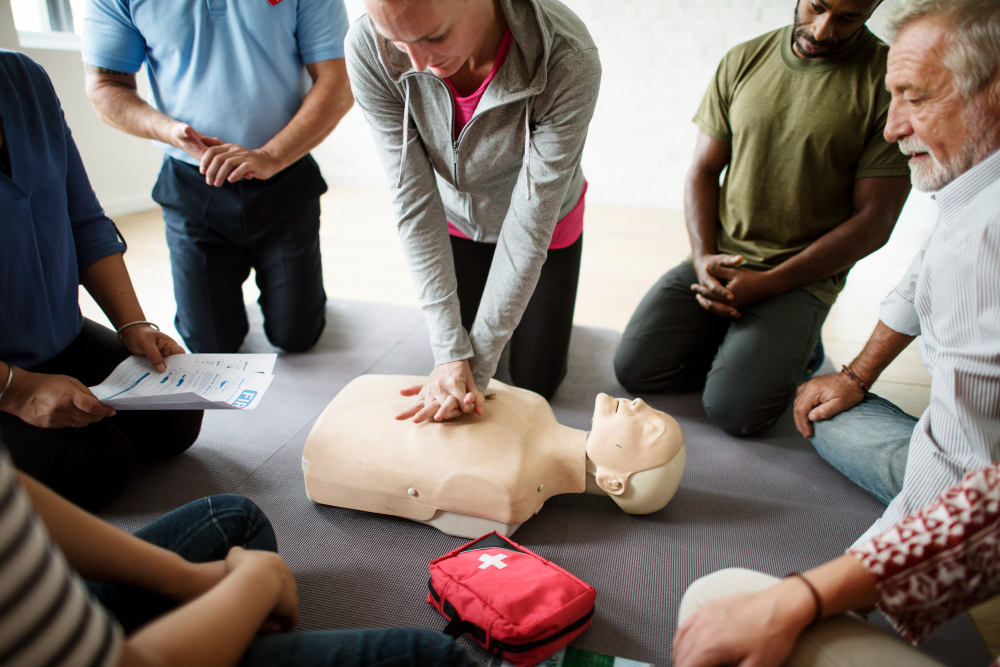In the high-stakes realm of cardiopulmonary resuscitation (CPR), every action taken can mean the difference between life and death. When performing CPR on an adult in cardiac arrest, ensuring adequate chest compressions is paramount to optimizing the chances of survival. Let’s delve into why this action is the linchpin of high-quality CPR and explore the intricacies of its execution.
Sustaining Circulation and Oxygenation
Effective chest compressions serve as the primary mechanism for sustaining circulation and oxygenation to vital organs during cardiac arrest. By manually compressing the chest, rescuers generate blood flow, thereby delivering oxygen to the brain, heart, and other critical organs. This continuous supply of oxygen-rich blood is essential for preserving cellular function and minimizing the risk of irreversible damage.
Maintaining Perfusion Pressure
Chest compressions also play a crucial role in maintaining perfusion pressure, which refers to the pressure gradient that drives blood flow through the body’s tissues. Adequate compression depth and rate ensure sufficient perfusion pressure is generated, optimizing tissue oxygenation and preventing organ failure. Rescuers must strive for consistency and precision in their compressions to sustain perfusion throughout the resuscitation effort.
Maximizing Cardiac Output
During cardiac arrest, the heart’s ability to pump blood effectively is compromised, necessitating external intervention to maximize cardiac output. Well-executed chest compressions help augment cardiac output by manually compressing the heart between the sternum and spine. This action mimics the heart’s natural pumping mechanism, expelling blood from the chambers and into the circulatory system.
Facilitating Defibrillation Success
In conjunction with defibrillation, chest compressions significantly enhance the likelihood of restoring a normal cardiac rhythm. Prior to defibrillation, the heart may be in a state of ventricular fibrillation or pulseless ventricular tachycardia, both of which require a shock to reset. Effective chest compressions improve the chances of successful defibrillation by priming the heart, ensuring optimal blood flow and oxygen delivery prior to the shock.
Minimizing Interruptions and Downtime
Minimizing interruptions in chest compressions is crucial for maintaining the momentum of CPR and maximizing its effectiveness. Rescuers must aim for minimal downtime between compressions, ensuring a continuous flow of blood to the vital organs. Brief interruptions for rhythm checks, ventilation, and defibrillation should be coordinated to minimize the impact on overall perfusion pressure and maximize the chances of successful resuscitation.
Monitoring Compression Depth and Rate
Monitoring compression depth and rate is essential for ensuring the quality of chest compressions throughout the resuscitation process. Rescuers should aim for a compression depth of at least 2 inches (5 centimeters) in adults, with a rate of 100 to 120 compressions per minute. Utilizing feedback devices and maintaining proper hand placement can help rescuers maintain consistency and optimize compression effectiveness.
The Lifeline of Survival
In the high-pressure environment of cardiac arrest, adequate chest compressions emerge as the lifeline of survival, sustaining circulation, and oxygenation to vital organs. Their critical role in maintaining perfusion pressure, maximizing cardiac output, and facilitating defibrillation underscores the importance of ensuring their effectiveness during CPR. By prioritizing chest compressions and optimizing their execution, rescuers can significantly improve the chances of survival for individuals experiencing cardiac arrest. So, let us recognize and uphold the indispensable role of chest compressions as the cornerstone of high-quality CPR.
